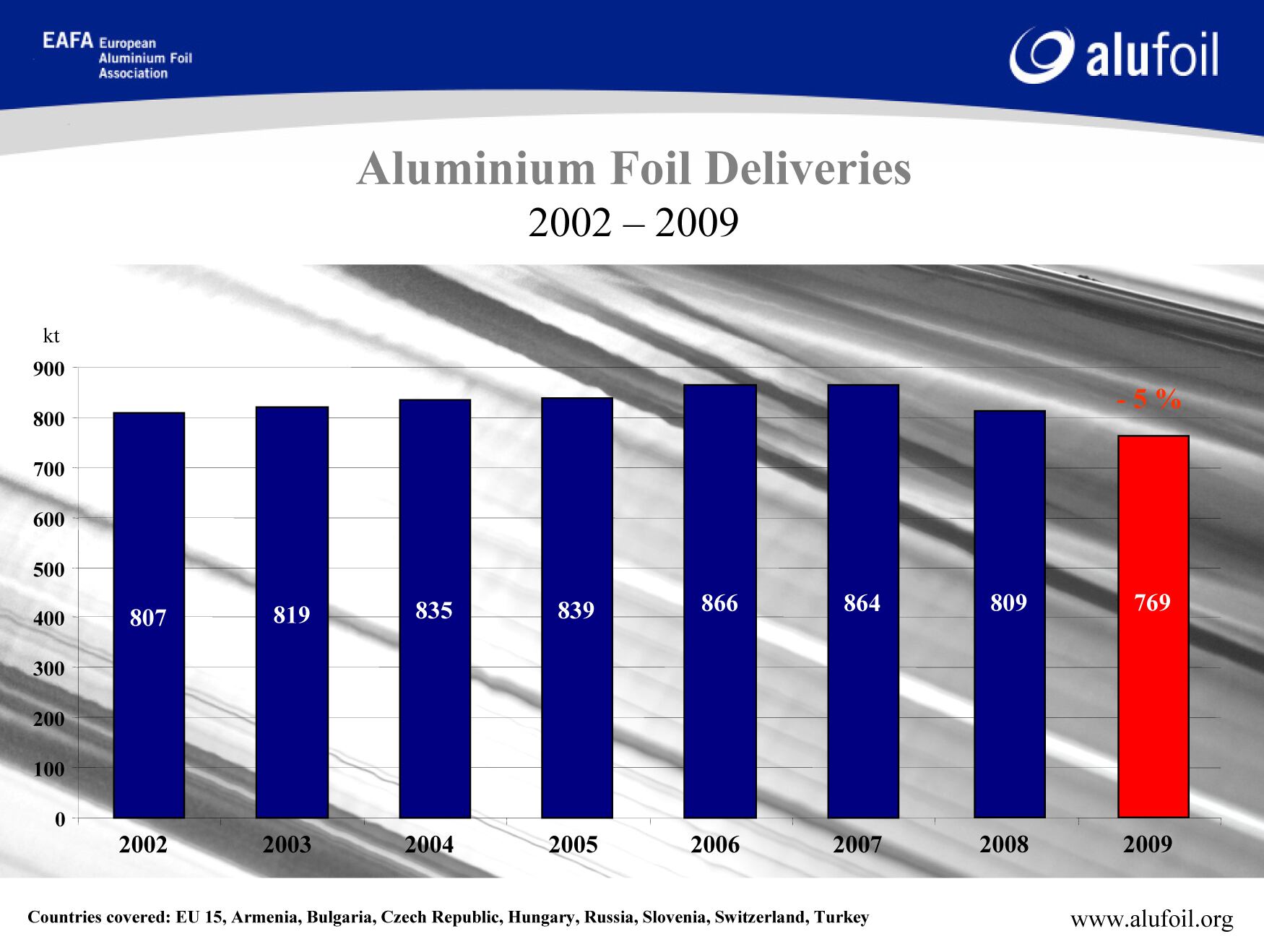The European Aluminium Foil Association (EAFA) said increasing demand for thinner alufoil for flexible packaging applications and for household foil, saw production jump by more than 11 per cent in the fourth quarter of 2009, compared to the same period last year. Overall 2009 production figures for thinner gauges showed a slight increase of 0.3 per cent on 2008.
The body said the figures gave it “grounds for cautious optimism” and there was “evidence that recessionary influences are softening”.
Total aluminium output from EAFA members for 2009 was 768,600 tonnes – a year-on-year fall of five per cent. But the group said the final quarter of 2009 showed some signs of recovery at 199,400 tonnes, a rise of 9.3 per cent on the same period in 2008. Even so, demand for thicker foil fell 16 per cent in 2009 compared to 2008 – although there were also signs of improvement in this segment in the last quarter.

Thinner foil demand
Sola Adebiyi, aluminium analyst for CRU Group, confirmed the trend that saw thinner foil demand outstrip that for thicker foil at the close of last year, would continue in 2010.
“It is reasonable to expect that the thinner foil segment will see greater improvement than thicker foil widths on the back of firm consumption from the aseptic and food packaging sectors in particular,” he told FoodProductionDaily.com.
He added that while demand for thicker foil was likely to improve in the coming months, “any growth here would be modest compared to growth in the flexible packaging sector”.
An EAFA spokesman said a major reason for the thin foil demand increase was that prolonged customer destocking had ended in Q3 2009.
“Customers from retailers, all back down the supply chain, waited for as long as they could before restocking - and this finally happened toward the end of the year,” he said. “Aluminium demand has been much more stable in the he food and drinks sectors than the building and automotive industries. But we have noticed that new orders across all sectors tend to be smaller and more frequent – meaning suppliers have to be flexible in turning around requests as quickly as possible. Geographical proximity to customers is therefore helping European suppliers.”
